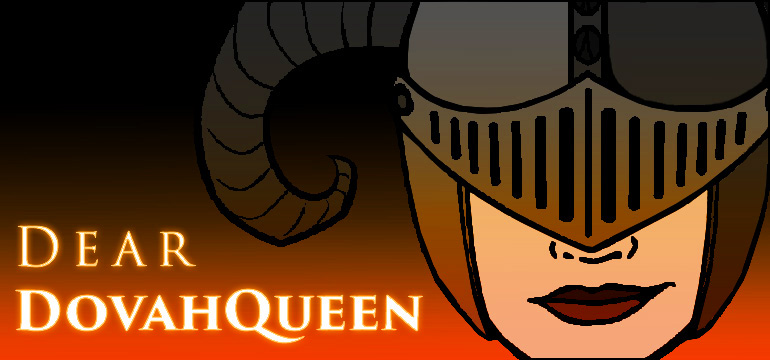How much should you allow your players to change their characters after creation? In this, we explore how and when to handle respecs.
Dear DovahQueen: How much rebuilding is wise to permit when starting a campaign at high levels? I like to give some to avoid inevitable feelings that the character doesn’t function as intended, but I also don’t want to feel like their choices are always reversible for fear of spoiling tension.—Respec Reluctant
Dear Respectorant: I like that you’re open to starting a high-level campaign. Sometimes the story that you wanna tell just works better when your characters already have miles of adventure behind them. On top of that, it’s impressive that you recognize some characters might not work as well as the players had planned, and that that’s not necessarily a casual failing on their part. A lot of GMs take the stance, “You made your bed. Now you’re gonna lie in it,” and that kinda just needs to go away. Hard stances like that tend to make a player, who’s not having as much fun as they could, have even less fun. That said, you’re quite right to be concerned about allowing the free exchange of game mechanics because you do want those decisions to have weight and be something that matters. I do think it’s important to note the difference between swapping out some features here and there versus swapping out entire character concepts. If the player made a noble-born soldier from Bakersfield with a limp and a drinking problem, they should probably be locked in on that choice (with the exception of character development in the future). If that same soldier was made at level 12 and selected a feat that just doesn’t do work, it seems perfectly reasonable to give them a few options for “refining” their character. There are a few different ways you could approach this, and I don’t think that any one of them would be the wrong way to handle it.
Some systems have already addressed this very thing. You could allow “retraining” of the character at the cost of in-game time and money. Perhaps switching feats costs 2 weeks of work, and swapping out a class level could cost 3 months. You could tack on a gold amount too and label it as “trainer fees” or some such. If this were my game, I’d consider setting the price of retraining at X monies times the character’s level and making it a serious investment.
Other systems have some more convenient, built-in methods. If we broaden those, consider allowing one feat, ability, or class feature to be exchanged at every level. This way, it’s still something that the player and character have to earn. I like this method for giving players a chance to “try out” something that they’re not sure about it. I wouldn’t use it for something like class levels though because that could be taken advantage of very quickly. Maybe consider allowing them to use this to swap one class for a very similar class, but I certainly wouldn’t want to see a barbaric savage defeat a powerful bear-monster and suddenly become a posh sophisticate who just-so-happens to also be able to swing an ax. Again, this is where I’d encourage that you allow some flexibility in character mechanics, but not in character concept.
For your specific example of starting in a high-level game, I’d take a page from video games. Many RPGs that let you design your character will put you into a tutorial which ends with asking if you’d like to redo any part of your person. Thus, you’ve gotten to spend the tutorial playing around with your design, and you can easily undo anything that didn’t suit your fancy before you get locked in. In that light, I’d let players know that they’re going to get to “try out” their builds in the first session and that they’re going to have the opportunity to do some fine-tuning before the second. I’d also make sure they know in no uncertain terms that their character concepts will be locked in from the go. So, I would let our soldier from Bakersfield switch out Fighter for Slayer or something along those lines, but he’s not going to suddenly become a master of illusion magic. In theory, this method could be useful for a game of any level, but I do think that you’ll find more reason to use it when players are picking 30 different features all at one time. That scenario makes it incredibly difficult to pick all of the right things.
Depending on what you’re comfortable with, and how likely your players are to take a mile when you give them an inch, I see no reason you couldn’t use all three methods. Myself, I tend not to announce what I’ll allow them to do, and instead, I’ll handle concerns on a case-by-case basis. That said, I haven’t ran a game that starts at high level in a while, and when I do, I’m probably going to give them that one-session grace period.
You can request RPG advice or send your questions by email to deardovahqueen@gmail.com or on Facebook.






